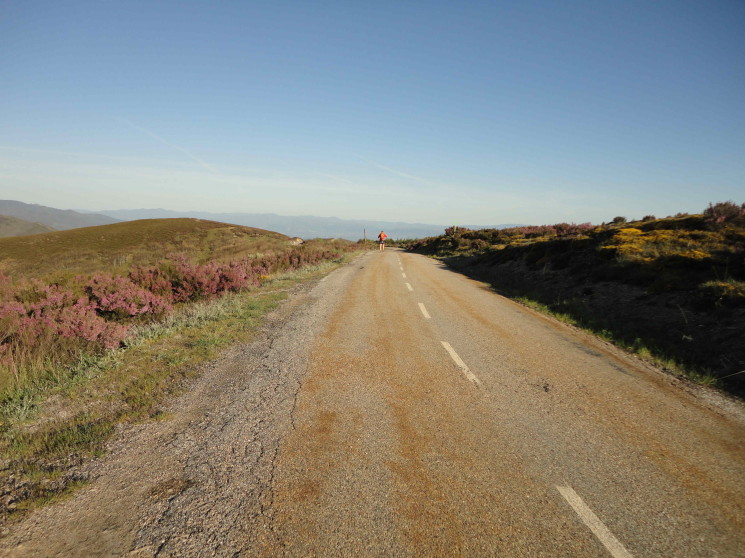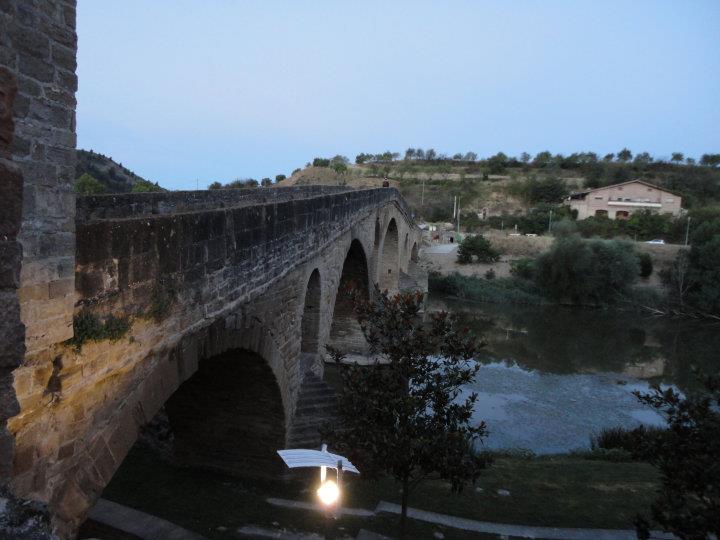
- The Camino
Brazil’s Paulo Coelho did it and started writing. Germany’s Hape Kerkeling did it as well and had his coming-out after he wrote a book about his experience that turned into a best-seller. Martin Sheen did it with his son and created The Way – a movie that received great ratings. Clearly, there is something special about Spain‘s Way of St. James. Not only does it lead through mesmerizing landscapes and beautiful cities, but it also seems to lead people to themselves while experiencing the best life has to offer: Amazing red wine, tasty regional dishes, fascinating traditions, and the power to enjoy even the smallest things on a journey like no other.
The Way of St. James (Camino de Santiago) is an ancient pilgrim’s route, which is deeply intertwined with Spain’s history. Pilgrimages to Santiago de Compostela, where Saint James’ remains are said to have been laid to rest, started in the 9th century AD. The Way of St. James then became one of the most important pilgrim’s routes in Europe – so important that it was even guarded by the Orden of the Templars until their fall from grace in 1307. Today, their traces can be found along the way.
Walking the 500-mile-long Way of St. James in its entire length takes at least 30 days and most people walk it two weeks at a time. As most people don’t have 30 days at hand to walk the entire Camino in one shot, they divide the walk into two to three parts. We’ve done the same – read on to discover our two-part series that covers the top six Camino cities you must visit. Here are the first three places you absolutely need to experience!
-

The Camino Roads
1. Pamplona – Taking the First Step
“Any dream is made possible by taking the first step. So whenever you want something, the whole universe will conspire for you to get it. But you have to take the step towards your dream.”
– Paulo Coelho
According to Coelho, any dream is possible by taking the first step. The most famous part of The Way is the so-called Camino Francés, which leads from the French Saint-Jean-Pied-de-Port through Puente de la Reina to Santiago. Yet, most people start their journey in Pamplona, as it’s the first major city after the Pyrenees and it’s easily accessible.
Pamplona is the historical capital city of Navarre and home to the San Fermín festival (July 6-14), during which bulls are let free to run through the city. Even though the city is technically part of Navarre, it’s still in the Basque region and has a distinctly Basque flavor and cuisine. The houses are also more rustic than in other parts of Spain. It’s better to not ask too many questions – enjoy the buildings and cuisine; the politics of this region are complicated! As a treat, we recommend eating Cordero al Chilindrón. Restaurant Baserri is one of the famous Pinxto (Basque for tapas) places offering this dish, which is typical of the region and was formerly eaten by Basque shepherds. Music lovers can also check out the Basque folk song Txoria Txoria to get a feel for the region. It truly is no surprise that Paulo Coelho came up with The Alchemist after having completed his pilgrimage through Spain!
One of Pamplona’s outstanding features is the star-shaped, Baroque city walls. In fact, most of the town’s buildings are in the architectural style of this time – even the Gothic cathedral, which was “beautified” with a Baroque facade. Another must-see is the city’s most famous building, the Town Hall.

2. Puente la Reina – Art is a Bridge
“I think bridges have a special meaning in our life. I think a book is a bridge. Any type of art is a bridge that allows different cultures to connect. You may not understand your neighbour’s way of seeing life, but you sure understand your neighbour’s joy in painting or dancing.”
– Paulo Coelho
Among the towns on the Way of St. James, Puente la Reina has always had a special status. Two ancient routes – the Camino Navarro and the Camino Aragonés – come together in this town, which is the actual beginning of the Camino Francés. Over centuries, thousands of pilgrims have joined in this city and then left by walking over the bridge. It’s worth taking a day’s break to wander around the lovely streets and visit the Romanesque Iglesia de Santiago el Mayor. Another landmark, that’s not too far from Puente la Reina, is the Templar church of Eunate. It’s located about 2km from the city and said to have special powers.
Because of its many rivers, Navarra is home to many fish dishes. We think that, given you’re about to walk across one of the most famous bridges in Spain, you should try Trucha a la Navarra while in the city!

3. Logroño – Come for the Wine, Stay for the Food
“Accept what life offers you and try to drink from every cup. All wines should be tasted; some should only be sipped, but with others, drink the whole bottle.”
– Paulo Coelho
Naturally, wine is one of the most important ingredients of any pilgrimage through Spain. Being the capital of one of Spain’s most prestigious wine regions, we absolutely need to mention Logroño! Shortly before Logroño, you’ll enter the Spanish province of Rioja – and the name is more than a mere promise. In this region, the Camino leads directly through several vineyards. Yes, you heard right – as you walk, you’ll get to enjoy the sight of vines to your left and right. Naturally, it would be a true sin not to enjoy a glass of red wine in the evening!
In fact, red wine is part of pilgrims’ meals offered all along the route. Besides your three courses, you get to choose between water and wine. So, just in case you’re wondering why everyone in the movie The Way is constantly drinking wine, sipping the red juice is an absolute must while walking through Spain! Logroño offers several wine tasting possibilities – you can even make your own wine for a day! Also, Rioja is famed throughout Spain for having the best chorizo. This means you should absolutely try one of Rioja’s traditional chorizo dishes, Patatas a la Riojana, together with the wine. Dozens of tapas bars can be found in the Calle Laurel.
As with most Spanish cities, Logroño’s churches are a must-see – particularly the half-Romanesque, half-Gothic Iglesia de San Bartolome and the magnificent cathedral Concatedral de Santa Maria de la Redonda, which has been declared a Spanish heritage site. At Museo de la Rioja, you can learn more about the history of the region – for free.
Your journey comes to a close as you end your day in Logroño – for now. By the time you wave goodbye to your Camino friends as you prepare to take the bus home, you’re definitely going to be anticipating the second part of your journey!
Would you consider walking across Spain or would you rather take the bus? Let us know in the comment section below!